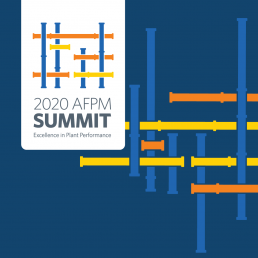A Guide to Integrating Virtual Events Into Our Marketing Mix
As the coronavirus (COVID-19) pandemic continues to impact the trade show and events industry, event marketers around the world are quickly adapting strategies, events and business models to come together and get business done to keep our communities connected.
We understand the importance of keeping our professional communities engaged, informed and supported during this critical time. We want to help you navigate the best way forward for your events over the coming months. Here are tips, tools and best practices to successfully take your event virtual or to add a virtual component to a live event when travel begins again.
Virtual Event Marketing Case Studies
Tips for Planning, Promoting and Hosting an Engaging and Profitable Virtual Conference or Trade Show
Consider a New Business Model for Your Virtual Event
Adjust Your Event Pricing
You may need to rethink your pricing structure. Typically, virtual events are less expensive than in-person events. Be sure that your prices are in the same ballpark of similar events, reflect the experience, the quality and amount of content, and perceived value for an attendee. Your virtual event pricing may even bundle with live event pricing in the near future. Be careful not to overpromise and underdeliver if this is your first virtual event.
Expand Your Digital Sponsorship Opportunities
Exhibitors or sponsors who are small businesses may depend on your event for leads and sales. Demonstrate value and retain sponsors by offering them access to your audience in other ways beyond a live event. Consider new sponsorable assets such as sponsored:
- E-mail blasts
- Banner ads on your association, event or publication website or newsletter
- Ad retargeting
- Research reports
- Board and committee meetings
- Spotlight on your blog or resource center
- Member surveys
Virtual events also hold the promise of great data and engagement metrics for sponsors — time spent at the event, experiences consumed, viewing behavior, etc.
Sponsor retention tip: Offer to transfer sponsorships to your next event, such as the rescheduled virtual or live event date, next year’s event or even a different event.
Create an Engaging Experience
Keep Your Brand in the Forefront
It’s essential to keep your brand presence strong. And don’t be afraid to embed some of your brand personality into the experience to feel authentic. You can do this through graphics, backgrounds, video, audio and so much more.
Boost Engagement by Adding Interactivity
Passive webinars are great — but they can lose an audience quickly. Get the audience involved as soon as possible through polls, surveys, etc. so that they feel like they are a part of the experience. Speakers should share the real-time data and their interpretations of the results. You can incorporate giveaways and have attendees request SWAG. Also consider gamifying any experiences you can! People love a little competition.
Keep Sessions Short and Sweet
Holding people’s attention is even more difficult virtually. Experts suggest that ideal sessions are approximately 20 minutes long. Having snack-sized content helps to keep people engaged in the experience.
Control the Presenter’s Environment
Looking good, sounding good and having some consistency with the experience should not be taken lightly. Make sure — and test in rehearsals — that all speakers have the right equipment, camera, lighting, audio and the backgrounds in frame are free of clutter and the speakers are well lit. They are ultimately a reflection of you as the organizer so this attention to detail will be essential to success.
Plan and Promote Scheduled Breaks
Remember that your audience is not as “captive” as they are at in-person events. Build in scheduled breaks so attendees don’t “break” on their own terms. Also, you should always have scheduled breaks visible in the platform so attendees know when the next scheduled break is. Some virtual events have done DJ’d breaks! Play some music, package some videos and get the audience moving to change it up.
Bonus: These breaks can be used to sell sponsorship slots for product demos or used to share important information with your attendees.
Adjust Your Content
Experiment When Scheduling Your Event
With so many people working virtually, everything we once knew about timing has changed. Don’t be afraid to try different times for your event — such as scheduling high-profile speakers in afternoon slots. Also consider a global audience and multiple time zones depending on the location of your audience.
Combined sessions and events should be kept to about 2–4 hours a day. Otherwise, you risk attendees dropping off. We also recommend an event not to exceed 2 days.
Make Navigating Content Easy
Having an easily visible, accessible agenda is important. This helps attendees navigate and personalize their experience with ease. You can also consider a “what to expect” video or high-level tutorial on how to navigate the platform.
Target Audiences with Relevant Content
You still can (and should!) create tracks and breakout sessions. By having these targeted tracks and breakout sessions, attendees will be able to get the same relevant and customized experience that they would onsite — increasing the value of your event. Ensure the platform you are considering allows for vertical session tracks.
Vary Session Formats
Sessions can still be engaging, interactive and personalized in a virtual environment. Not every presentation needs to be “lecture” format — consider integrating live roundtables with a moderator if your platform allows (like a moderated Zoom meeting).
Measure Live Feedback
Immediately following a session, activate short pop-up surveys to get real-time feedback on session, speakers and beyond.
Always Add Value
Having a resources page or allowing attendees to access relevant materials within each session is a high value offering. Speakers can include instant downloads to their papers, decks, even links to their books within their individual sessions. Also, the entire event should be available to attendees on-demand for 3–6 months after the event.
Reach an International Audience
Some platforms offer translation services and you can push out translated versions of the conference based on geographic locations.
Share the Show Floor Experience
There is nothing like wandering the aisles of an exhibit hall full of captivating new products and technology. But there are innovative ways to display the what’s new in your industry and get people connected.
Exhibits
You can still have game-changing products on display in a virtual event! Have your exhibitors create short demos featuring their top products in action. These demos should be created as teaser videos and last no longer than 90 seconds. The attendee should also have an easy way to quickly contact the exhibitor to learn more or schedule a meeting.
You can also host virtual floor tours relevant to each of your target audiences/verticals. Create engagement in the virtual tour by integrating prizes to encourage virtual booth exploration.
A strong platform will offer the critical real-time data to exhibitors from those who are interested in their products. And exhibit booth staff should be available online for chat functions or instant meetings — just like would happen on an in-person trade show floor.
Networking
The power of face-to-face networking will never go away, but there are ways to connect attendees through virtual platforms. Many platforms have built-in chat functions. Some platforms enable you to integrate Slack so attendees can connect instantly in the moment. You should also consider having a live Twitter feed within each session so attendees can share opinions and connect.
CSG Can Help with a Free Event Consultation
Many of you are trying to pivot to a virtual environment. This can be a stressful and daunting task and we’d love to help. Below are just a few of our services that can alleviate some of the pressure and barriers to success.
Design a Virtual Identity for Your Event
- Branded virtual backgrounds for speakers and attendees
- PowerPoint templates
- Virtual environment “signage”
Create Dynamic Video Content Development & Production
- Pre-event promotion
- Opening videos
- Speaker introductions
- How-to tutorials explaining the structure of the event
- Keynote & session videos
- Session transitions
Develop Digital Advertising Strategies
- Craft messaging strategy for all target audiences
- Plan and execute strategic campaigns that will drive attendance to your events and reach new audiences that may not have attended your in‑person event
- Create an interactive microsite or digital brochure highlighting the features of your virtual event
Ready to go virtual? Let us know how we can help.
Explore Virtual Conference Platforms
We’ve been doing our homework on virtual events — including experiencing them ourselves — and have identified some platforms that we feel have strong functionality and user experiences.
Please note that CSG has no official virtual platform partner or any formal relationship with these companies. These are strictly resources to help you navigate virtual options that may meet your needs or budget requirements.
It’s never been more important to stay connected and to learn from one another.
We hope that you have found this information helpful and we will continue to update this page as we learn more. If you have any questions or just need a second opinion, shoot us a note and we’d be happy to help.
Together, we can preserve the integrity and viability of our in-person events while adapting to safe and necessary COVID-19 restrictions while the world recovers from this crisis.



